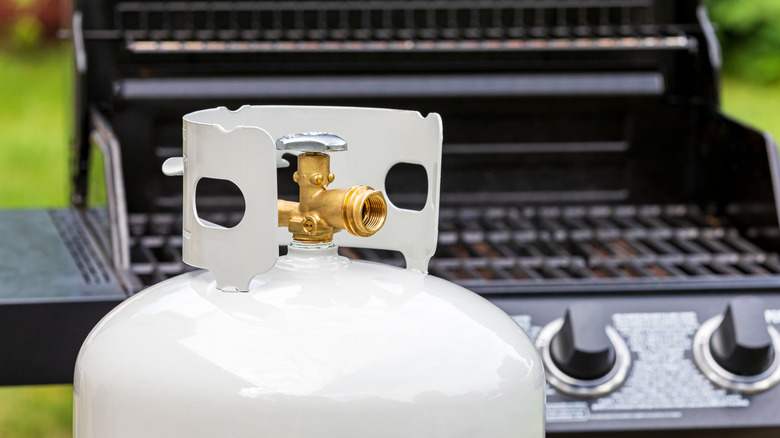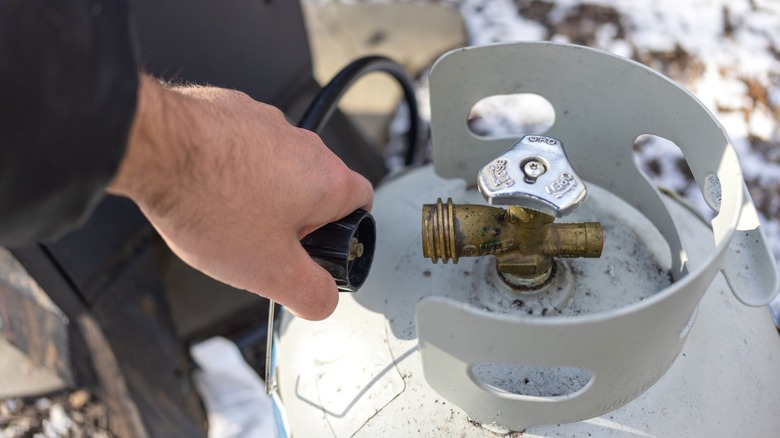Why A Cup Of Water Is Key To Checking Propane Levels For Grilling Season
We may receive a commission on purchases made from links.
When the seasons change and the weather starts to warm, grilled fare is quickly back on the menu. It's an exciting time when many are making plans for grilled ribs at backyard barbecues and pairing them with expertly cooked veggies, but don't get too hasty. Some things need addressing before you fire up your favorite outdoor appliance. Chief among them: checking to make sure you actually have propane left in the tank.
Of course, you could just read the gauge, but if your propane tank doesn't have such a thing, you can attach one like the GASPRO Propane Tank Gauge without breaking the bank. However, there is an even cheaper option for folks who just can't wait. All you need is a cup of hot water.
Propane has a chillingly low boiling point of -44 degrees Fahrenheit, which is why folks understandably associate it with its gaseous state. When it (or the tank housing it) comes into contact with hot water, that heat is pretty quickly absorbed. When you pour hot water on the tank, the chilly propane will quickly suck away the heat. Use your hand to feel the level on the tank at which that cold starts, which should give you a rough estimate of how full the tank is. If you don't feel a cool spot, the tank is likely empty. However, before you replace it and start grilling, there are some other things you will want to inspect for safety's sake.
Safety first when grilling with propane
Before you rush off to get cooking once you realize you have half a tank of propane leftover from last season, there are still a couple of things that need to be checked. If your grill was properly prepped for offseason storage, you are one step ahead of the game. Still, some issues, like leaky gas lines, could exist.
First, look over the lines for any signs of wear and tear. If you see something suspicious, mix one cup of water with a tablespoon of dish soap. Turn the gas line on and spray the solution over the potentially problematic area. If there is a leak, the dish soap and water solution will bubble, meaning the hose needs to be replaced before you can start grilling safely.
It is also worth checking the propane tank itself for signs of degradation, like rust. Although propane tanks can last for years when they're properly cared for, seeing rust on the tank is a sign that it is no longer as sturdy as it should be. In fact, it could be a recipe for disaster. If you are cleaning your grill after every use, the likelihood of noticing rust on the grill is low, but if it occurs, you can generally remove it without creating a safety hazard. Conversely, damaged propane tanks should be handled by professionals. When the tank has no rust, enough propane to get the job done, and the gas lines are leak-free, there's little left to do but grill up some appetizing summer cuisine.

